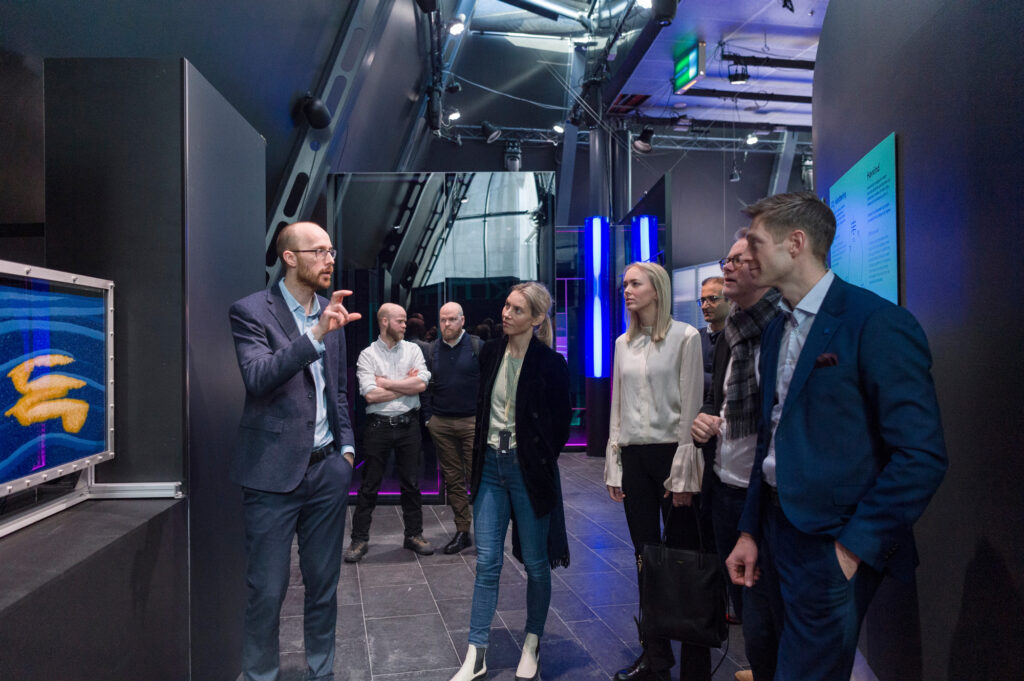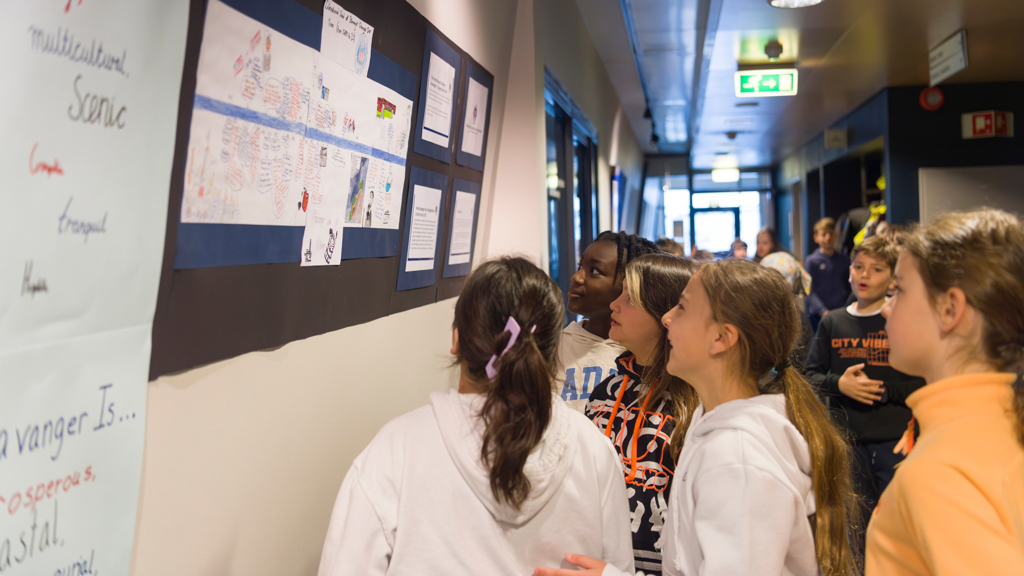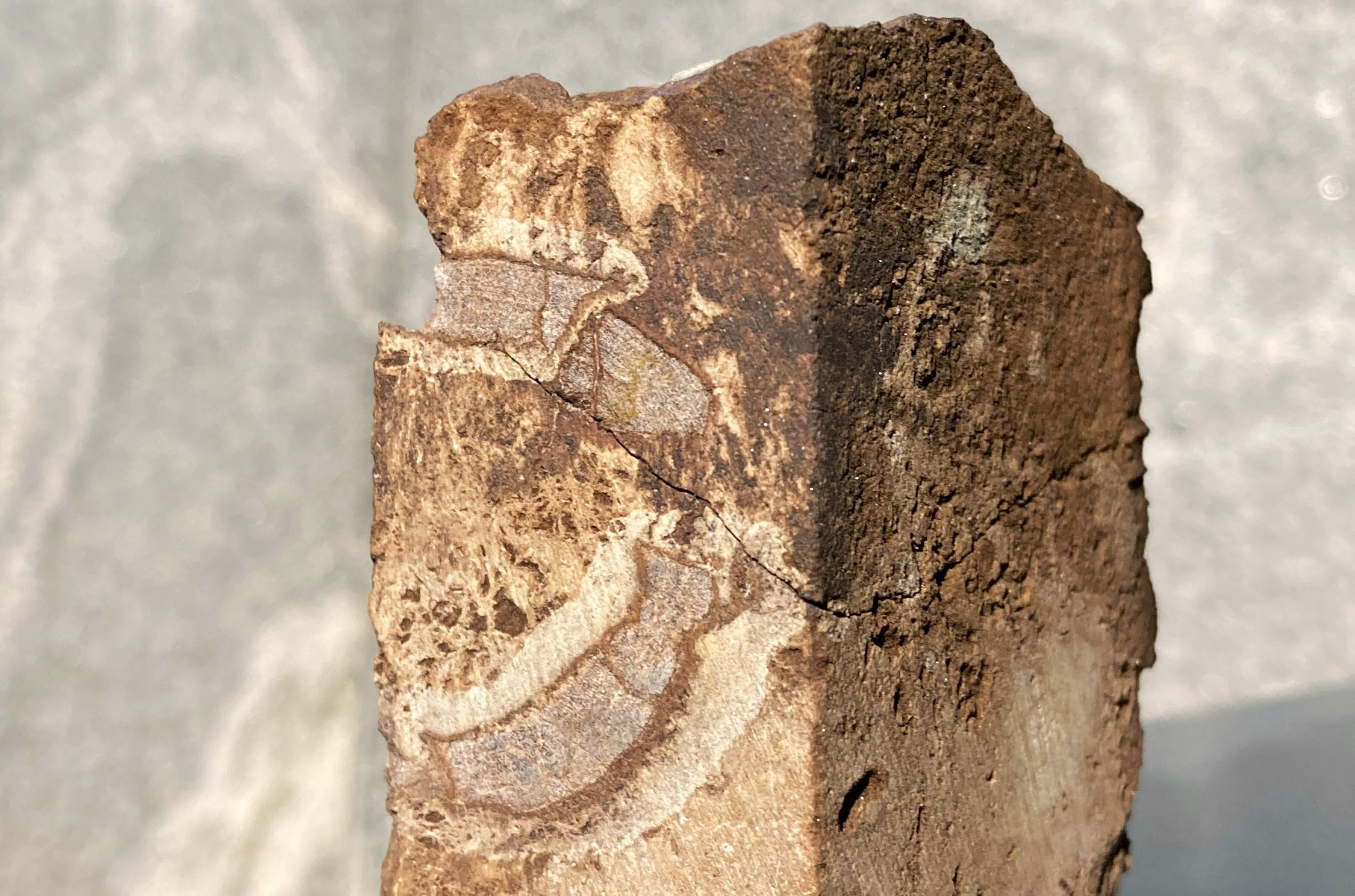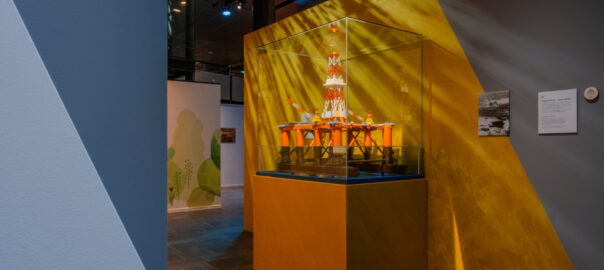The exhibition presents three technologies – offshore wind, hydrogen and CO2 management. Two of the technologies provide renewable energy, while the third handles the emissions from fossil energy such as oil and gas.
The technologies have in common that they can contribute to a more sustainable energy future where we have access to the energy we need while reducing emissions of greenhouse gases. The exhibition was opened at the Norwegian Oil Museum on 22 March by State Secretary Andreas Bjelland Eriksen in the Ministry of Petroleum and Energy.
Pupils from the 9th grade at the Gosen School try out how the hydrogen rocket works. (Photo: Shadé B. Martins/Norwegian Oil Museum)
Offshore wind and hydrogen
Offshore wind is in an early phase on the Norwegian continental shelf. Norway is fortunate from nature’s side; the country has very good wind resources – in fact some of the best in the world. The world’s currently largest floating offshore wind farm, Hywind Tampen in the North Sea, started production late last year. It supplies energy to the two nearby oil and gas fields Snorre and Gullfaks. The exhibition provides an introduction to offshore wind, and you can try out how a wind turbine works.
The exhibition also describes how hydrogen can be an energy carrier that helps us reduce greenhouse gas emissions. Among other things, you will learn about the difference between green, blue and gray hydrogen. You can also try to shoot a hydrogen rocket into the air. The market for hydrogen can be large, while at the same time it is challenging to be early and realize new projects.
CO2 management
The exhibition also provides an insight into the capture, transport and storage of CO2 underground. The purpose of this technology is to reduce the amount of greenhouse gases released into the atmosphere so that climate change does not increase. Such solutions are a prerequisite for meeting the ambitions of the Paris Agreement. This is a legally binding international treaty on climate change. It was adopted by 196 Parties at the UN Climate Change Conference (COP21).
The new Longship project (“Langskip” in Norwegian), which will be operational in 2024, will be the first complete value chain from capture on land via transport and intermediate storage to permanent underground storage. Norway has the natural prerequisites as well as the experience, knowledge and money to develop and adopt these technologies.
We also present an experiment where CO2 is pumped into a model of the underground. The Fluid Flower is developed at the University of Bergen for research on CO2 in the subsurface, and the University of Stavanger is responsible for the operation of the exhibition experiments.
Martin Fernø from the Univerity of Bergen explains how the Fluid Flower works.
The museum’s main collaboration partners for the exhibition are the Ministry of Petroleum and Energy, Equinor, TotalEnergies and Wintershall Dea, and Heidelberg Materials/Brevik CCS has also contributed. The exhibition will be shown at the museum until 12 November 2023.















